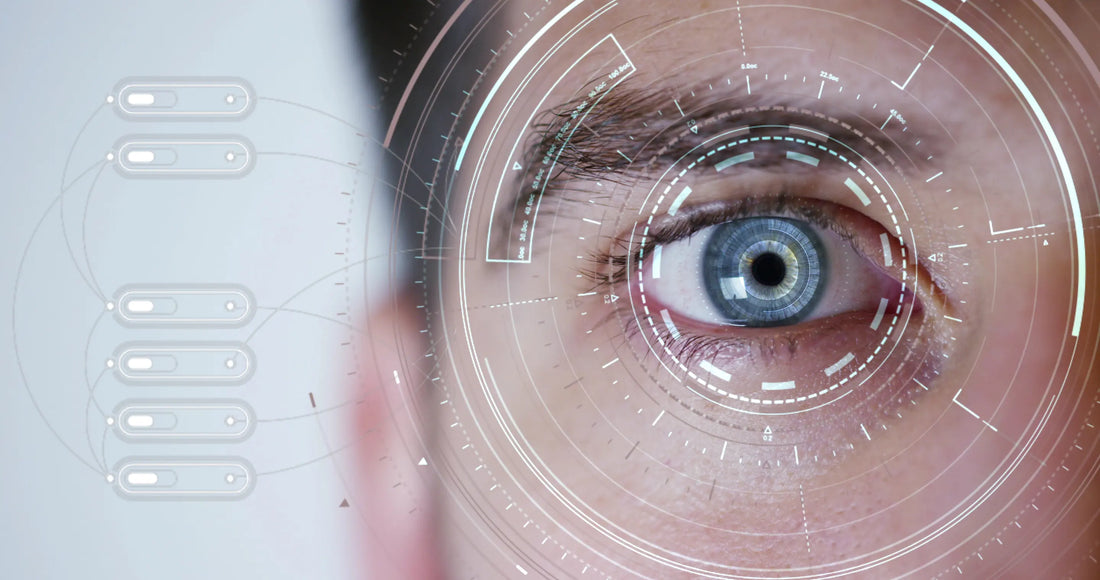
Navigating Vision: A Deep Dive into Eye Tracking Innovations
Share

The eye tracking industry is at the forefront of technological innovation, shaping how we interact with the digital world, navigate safety in automotive environments, and redefine accessibility. With its roots in human-computer interaction, this transformative technology has evolved to impact healthcare, gaming, marketing, and beyond.
As the market is poised for exponential growth, driven by advancements in augmented reality (AR), virtual reality (VR), and artificial intelligence (AI), let’s explore the key innovations shaping this exciting space and why now is the perfect time for investors to engage.
1. Integration with VR and AR
The synergy between eye tracking technology and AR/VR environments has elevated immersive experiences to new heights. Through innovations like foveated rendering, systems dynamically focus computational power on the user’s gaze, enhancing visual quality while conserving resources.
A notable example is AdHawk’s MindLink technology, which integrates lightweight wearable eye tracking into AR glasses and VR headsets. By enabling gaze-based interactions, this innovation simplifies user navigation and makes AR/VR experiences more accessible across hardware platforms.
Investor Insight: The demand for immersive AR/VR experiences continues to soar, creating a lucrative opportunity for investors to capitalize on eye tracking technology's critical role in this rapidly expanding market.
2. Accessibility and Assistive Technology
Eye tracking has redefined accessibility, empowering individuals with disabilities to communicate, interact with digital systems, and control their environment through gaze alone. This technology underpins advanced augmentative and alternative communication (AAC) devices, fostering inclusivity and independence.
UNICEF's deployment of eye tracking devices in Ukraine exemplifies this impact, enabling children with disabilities to engage in education and social activities. These applications highlight the profound societal benefits of eye tracking.
Investor Insight: With growing awareness and adoption of inclusive technologies, investing in eye tracking solutions for assistive applications aligns with both ethical imperatives and market growth potential.
3. Machine Learning and Advanced Analytics
The integration of machine learning (ML) with eye tracking technology has revolutionized how gaze data is interpreted. By analyzing user behavior, ML algorithms uncover patterns that drive personalized experiences, predict actions, and automate data analysis.
C. Light Technologies’ groundbreaking retinal eye tracking, combined with ML, showcases how this synergy evaluates neurological health and cognitive states. These insights have applications across healthcare, user experience design, and market research.
Investor Insight: The fusion of eye tracking and ML offers a competitive edge in data-driven industries. Companies leveraging this integration will define the future of personalized technology and analytics.
4. Automotive Applications
In the automotive sector, eye tracking technology enhances safety and driver engagement. By monitoring eye movements, systems detect signs of fatigue or distraction and trigger alerts or autonomous functions to mitigate risks.
Tobii’s partnership with Automotive Motion Lab to develop non-camera-based driver monitoring underscores the technology’s transformative potential. These innovations not only reduce accidents but also elevate the overall driving experience.
Investor Insight: With autonomous and semi-autonomous vehicles on the rise, eye tracking in the automotive industry is a high-growth opportunity for investors focused on safety and smart mobility solutions.
5. Predictive Eye Tracking Analytics
Predictive eye tracking, powered by AI, is revolutionizing marketing and e-commerce by analyzing gaze patterns to anticipate consumer behavior. This capability allows businesses to design highly effective ad campaigns, optimize website layouts, and boost conversion rates.
Attention Insight’s predictive model for ad posters, with a 90% accuracy rate, exemplifies this trend. By eliminating the need for traditional eye tracking studies, predictive analytics offers a cost-effective and scalable alternative for brands.
Investor Insight: Predictive analytics bridges the gap between consumer behavior and actionable insights, making it a game-changer for industries driven by user engagement.
A Market Poised for Growth
The eye tracking market’s evolution is fueled by its diverse applications across industries. From reshaping AR/VR and enhancing accessibility to driving safety and redefining marketing, this technology is paving the way for unprecedented innovation.
As companies like Tobii, AdHawk, and C. Light Technologies push the boundaries of what’s possible, the market is set to experience robust growth. For investors, this is an opportunity to engage with a technology that not only drives innovation but also addresses critical societal needs.
Conclusion
Eye tracking technology is no longer confined to research labs—it is a transformative force in how we interact with technology, access information, and navigate the world. As advancements in AR, VR, AI, and ML continue to propel the market forward, the potential for growth and innovation is immense.
For forward-thinking investors, the eye tracking industry represents a unique blend of technological innovation and social impact. Now is the time to navigate this visionary market and capitalize on its promising future.